The Best Flowering Trees and Shrubs to Plant In Your Central PA Garden
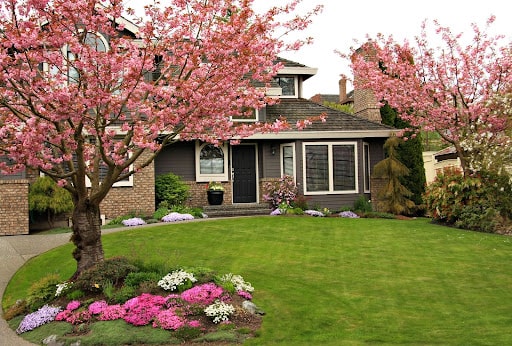
It’s that time of year again when the weather has finally begun to warm and the time has come to spruce up your gardens and front lawns. And what better way to do so than to surround your house with flowering trees and shrubs?
Choosing what to plant may seem daunting at first, but once you become familiar with what’s available, it can become a fun project. This blog will help you to learn about the best flower blooming trees and shrubs to plant, what’s common to central PA, and how to plant them.
Flower Blooming Trees
As the name suggests, flower blooming refers to perennial trees and shrubs that produce beautiful flowers in both the spring and summer months.
Trees can be beneficial in many ways. They are most known for creating more shade, attracting helpful birds and pollinators, improving air quality, and mitigating the effects of soil erosion.
Here are a few different types of flowering trees that can be found in the central Pennsylvania area.
Common Flowering Trees
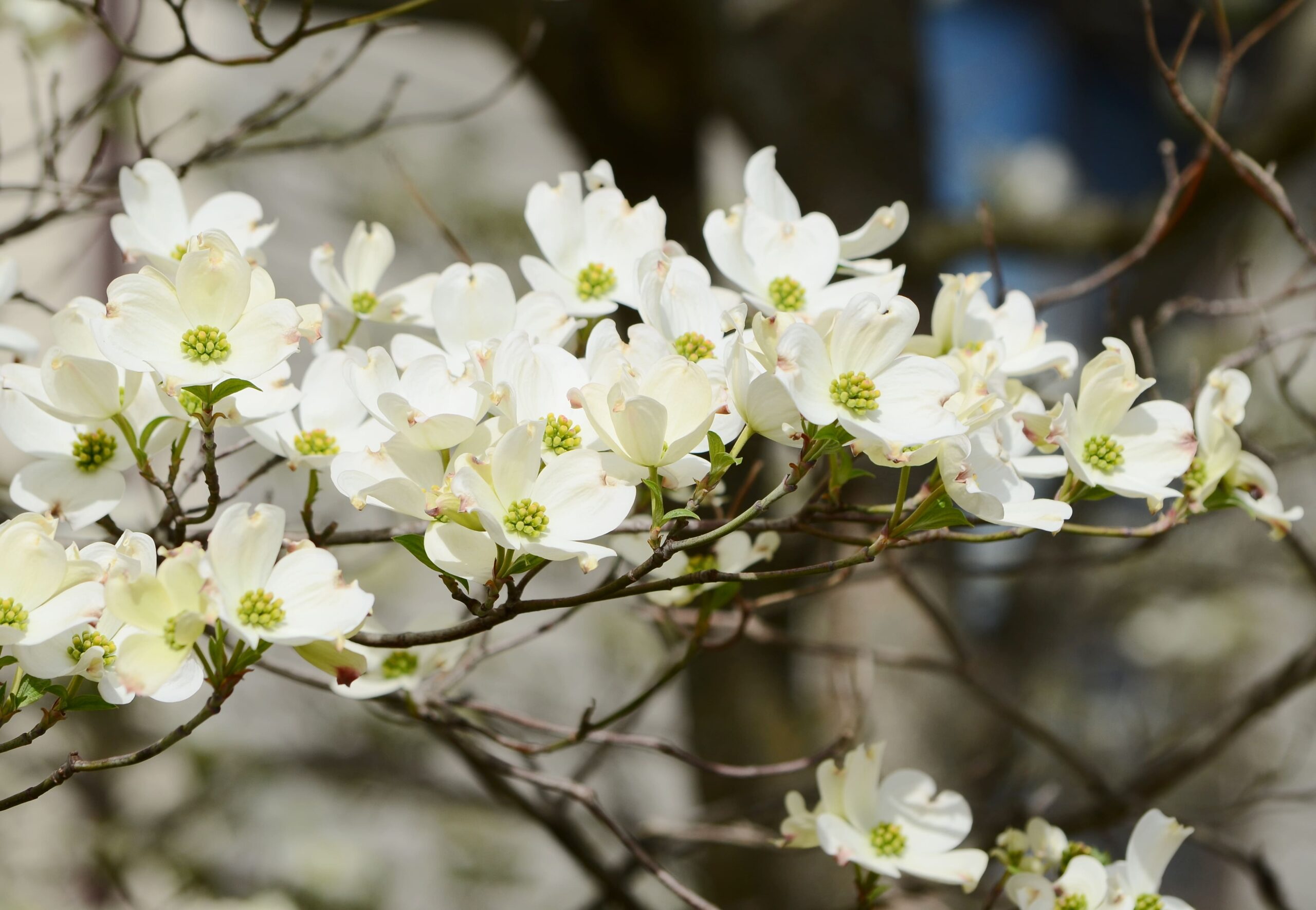
Beautiful trees that are notable for their bracts (modified leaves that look similar to petals) and their white, pink, and yellow true flowers.
Examples:
- Flowering Dogwood (Cornus florida)
- Silky Dogwood (Cornus amomum)
- Chinese Dogwood (Cornus kousa)

Small trees that produce pink/dark pink and white flowers and require lots of sunlight and well-drained soil. Most are well-known for bearing small red fruit as well.
Examples:
- Black Cherry (Prunus serotina)
- Kwanzan Flowering Cherry (Prunus serrulata ‘Kwanzan’)
- Snow Fountains Yoshino Cherry (Prunus ‘Snow Fountains’)
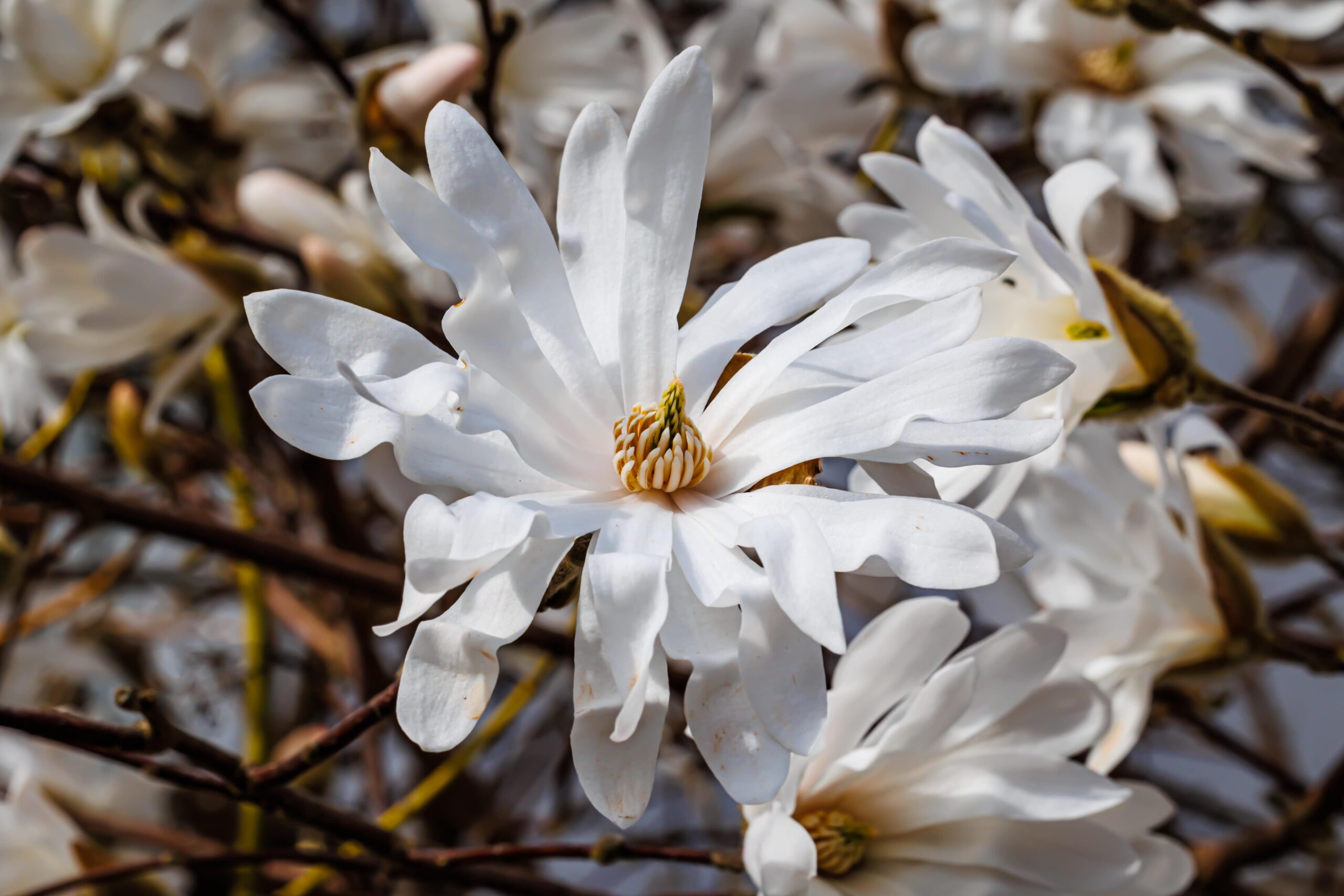
Trees known for their big glossy leaves and fragrant flowers (ranging from white to pink). Along with often preferring acidic soil, some species have even been known to survive in colder climates.
Examples:
- Star Magnolia (Magnolia stellata)
- Sweetbay Magnolia (Magnolia virginiana)
- Southern Magnolia (Magnolia grandiflora)
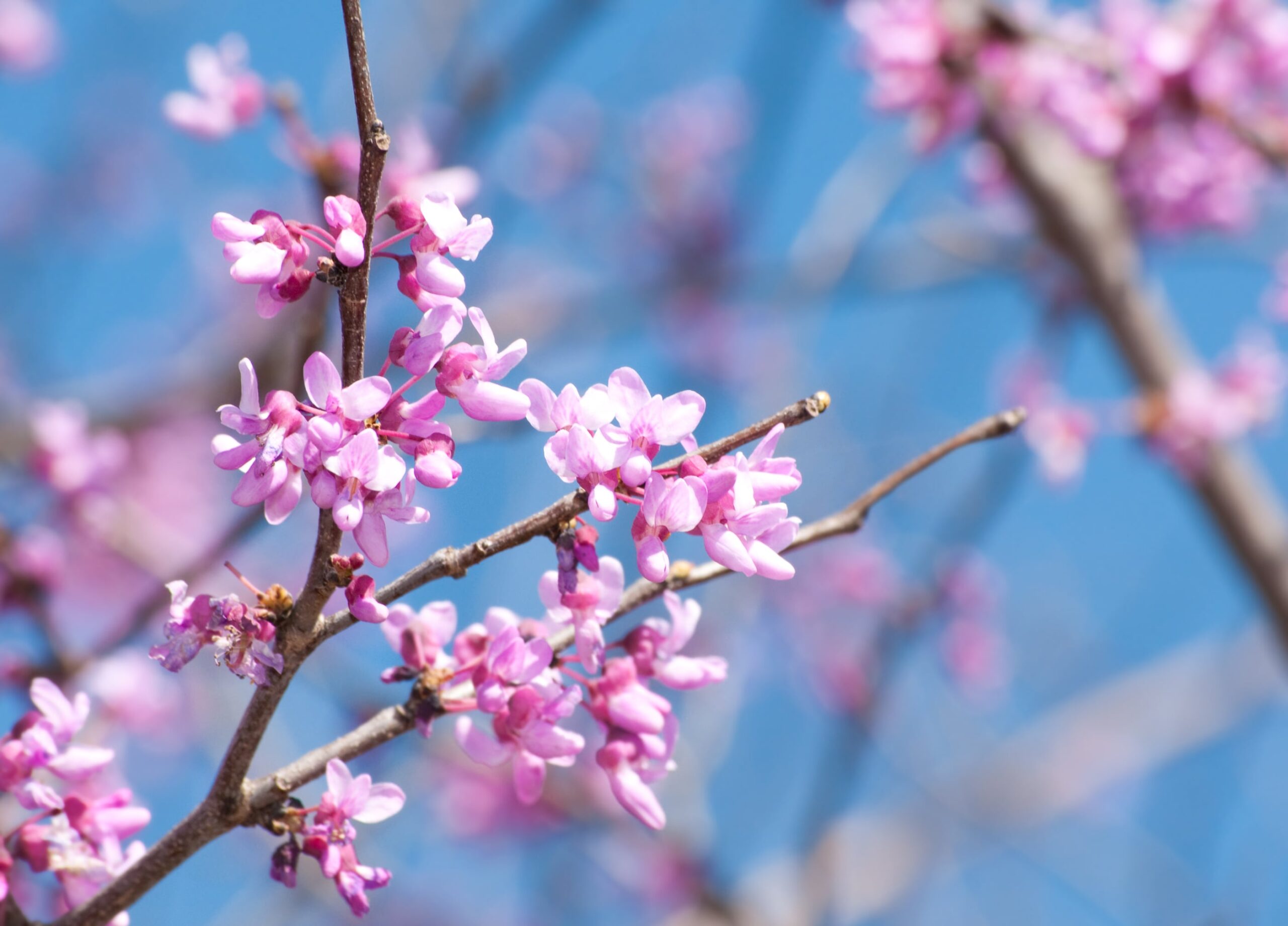
Trees that quickly grow pink to purple flowers and heart-shaped leaves.
Examples:
- Eastern Redbud (Cercis canadensis)
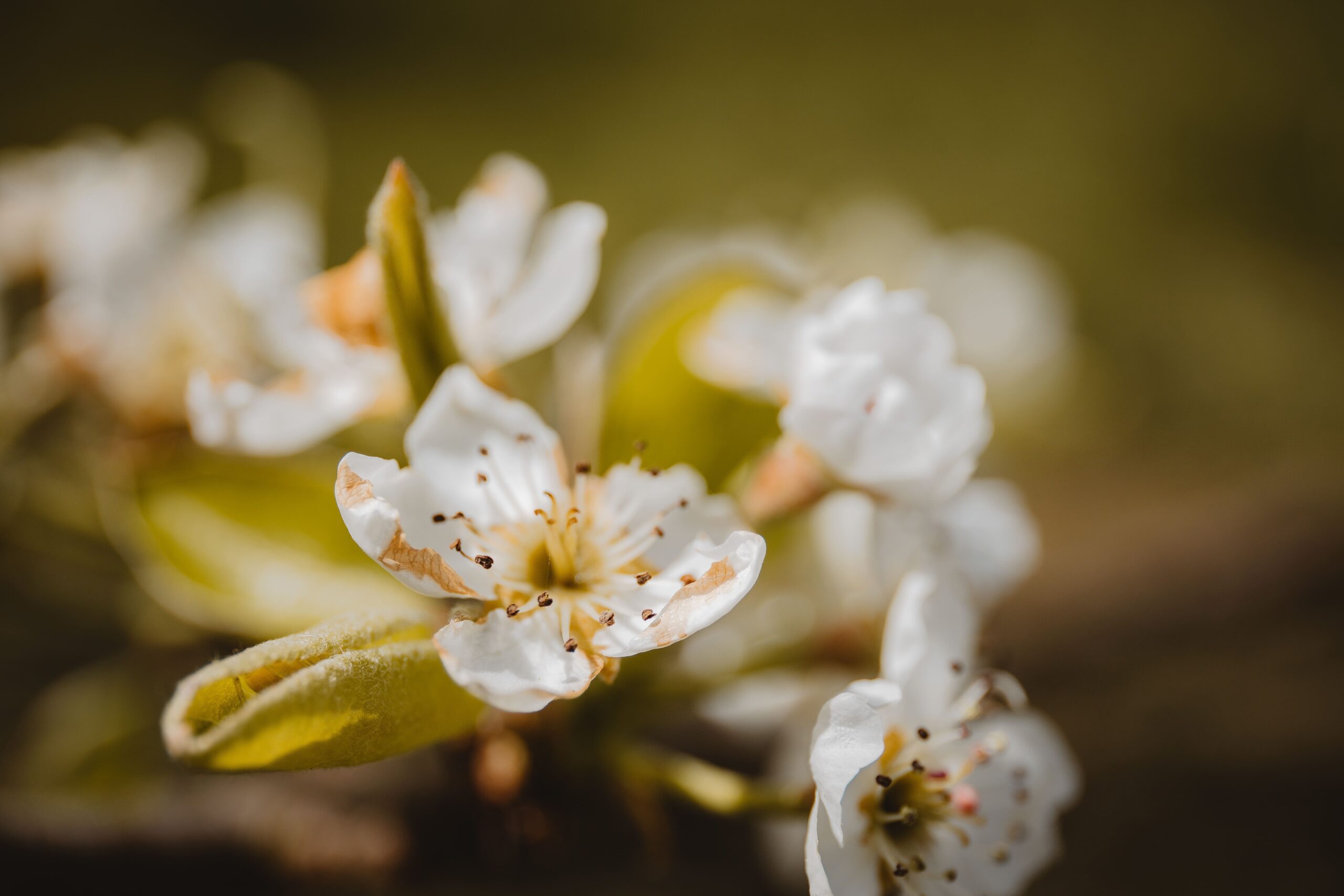
Early spring bloomers that produce beautiful white flowers and thrive in moist soil. Requires frequent pruning and maintenance.
Examples:
- Callery Pear (Pyrus calleryana)
Flower Blooming Shrubs
These types of plants share many of the same benefits as their flowering counterparts listed above. They are recommended more for those who wish for a more subtle change in scenery for their lawns and gardens.
Here are a few different types of flowering shrubs that can be found in the central Pennsylvania area.
Common Flowering Shrubs
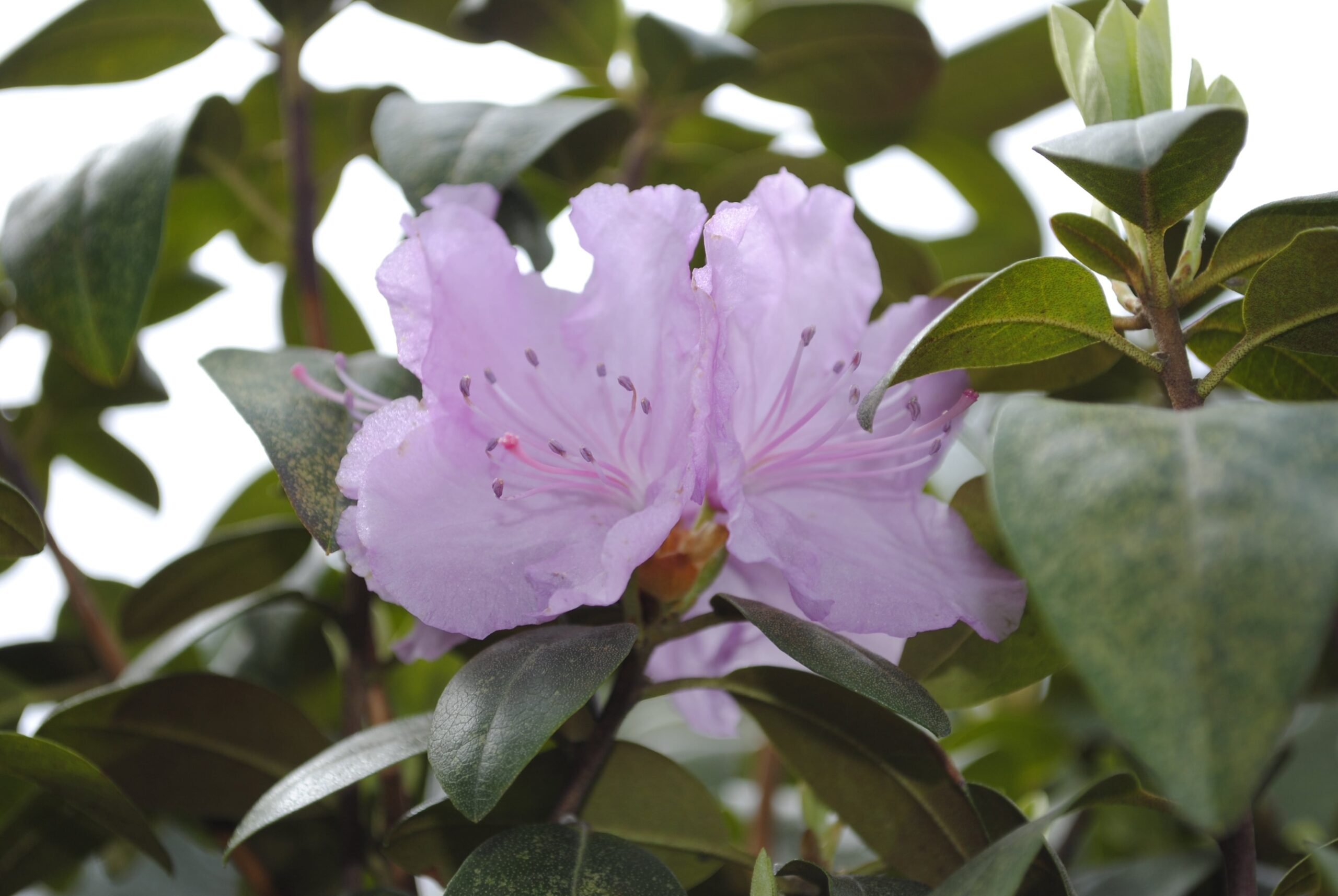
Smaller shrubs and flowers ranging from pinks to reds to lavenders that require partial shade and careful mulching.
Examples:
- Blaauw’s Pink Azalea (Rhododendron ‘Blaauw’s Pink’)
- Girard’s Karen Azalea (‘Rhododendron ‘Girard’s Karen’)
- Delaware Valley White Azalea (Rhododendron ‘Delaware Valley White’)
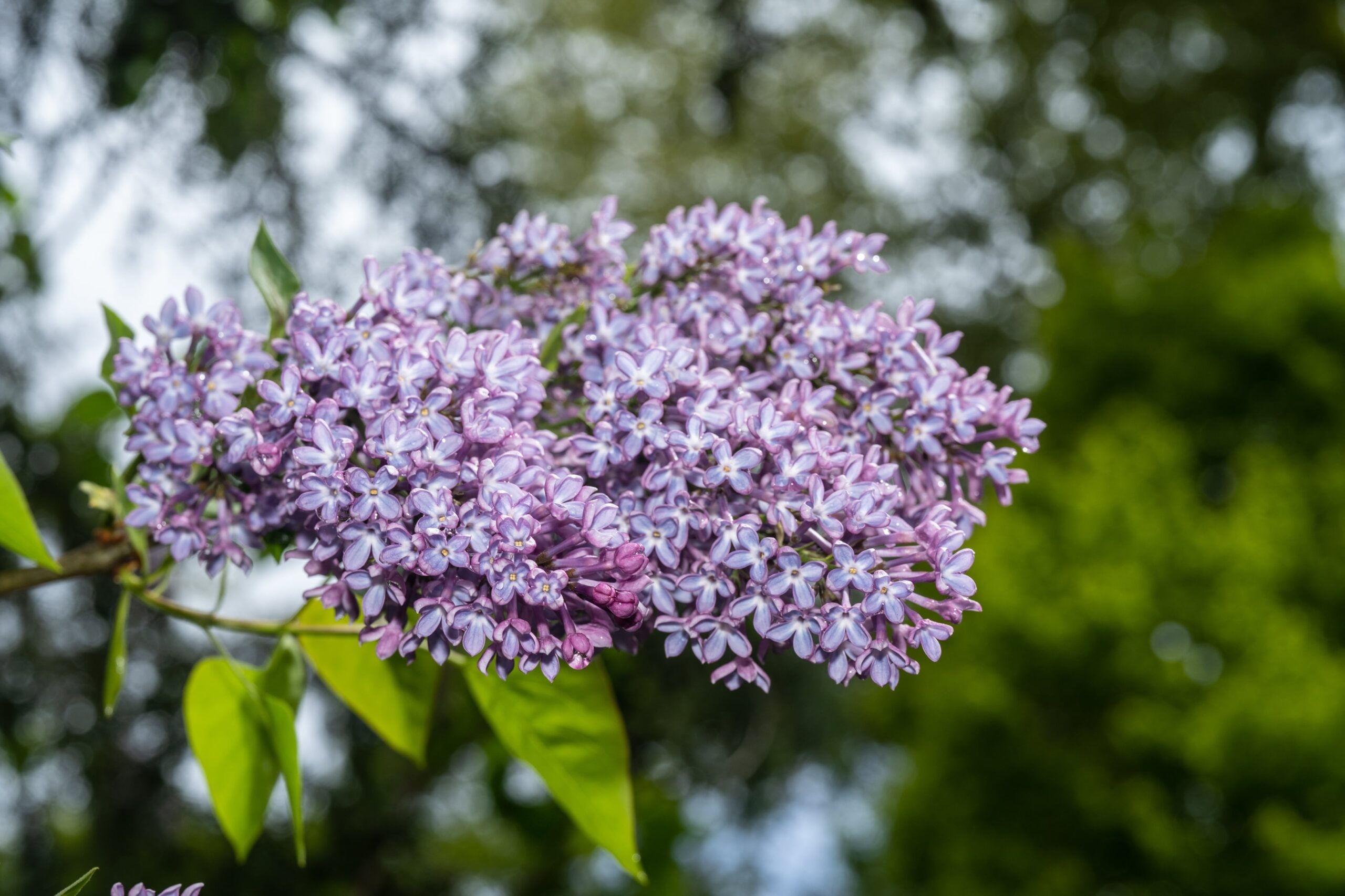
Known for their lilac and purple flowers, these shrubs are relatively easy to maintain and produce blooms that have a sweet fragrance.
Examples:
- Common Lilac (Syringa vulgaris)
- Dwarf Korean Lilac (Syringa meyeri ‘Palibin’)
- Bloomerang® Purple Lilac (Syringa ‘Penda’)
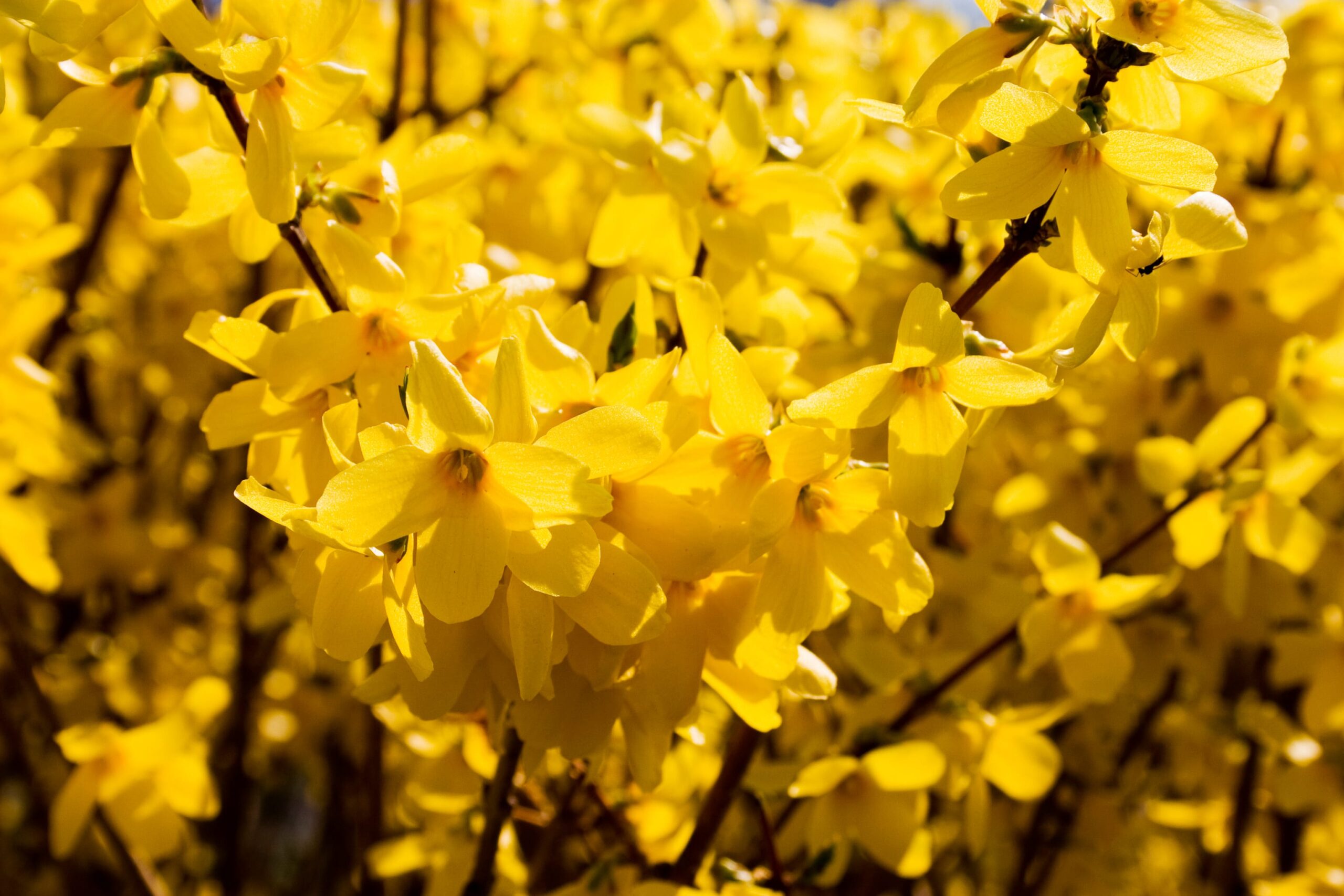
Shrubs that when in bloom, are covered in bright yellow flowers. They are especially popular in the spring and easy to care for due to their adaptable nature.
Examples:
- Lynwood Gold Forsythia (Forsythia x intermedia ‘Lynwood Gold’)
- Show Off® Forsythia (Forsythia x intermedia ‘Mindor’)
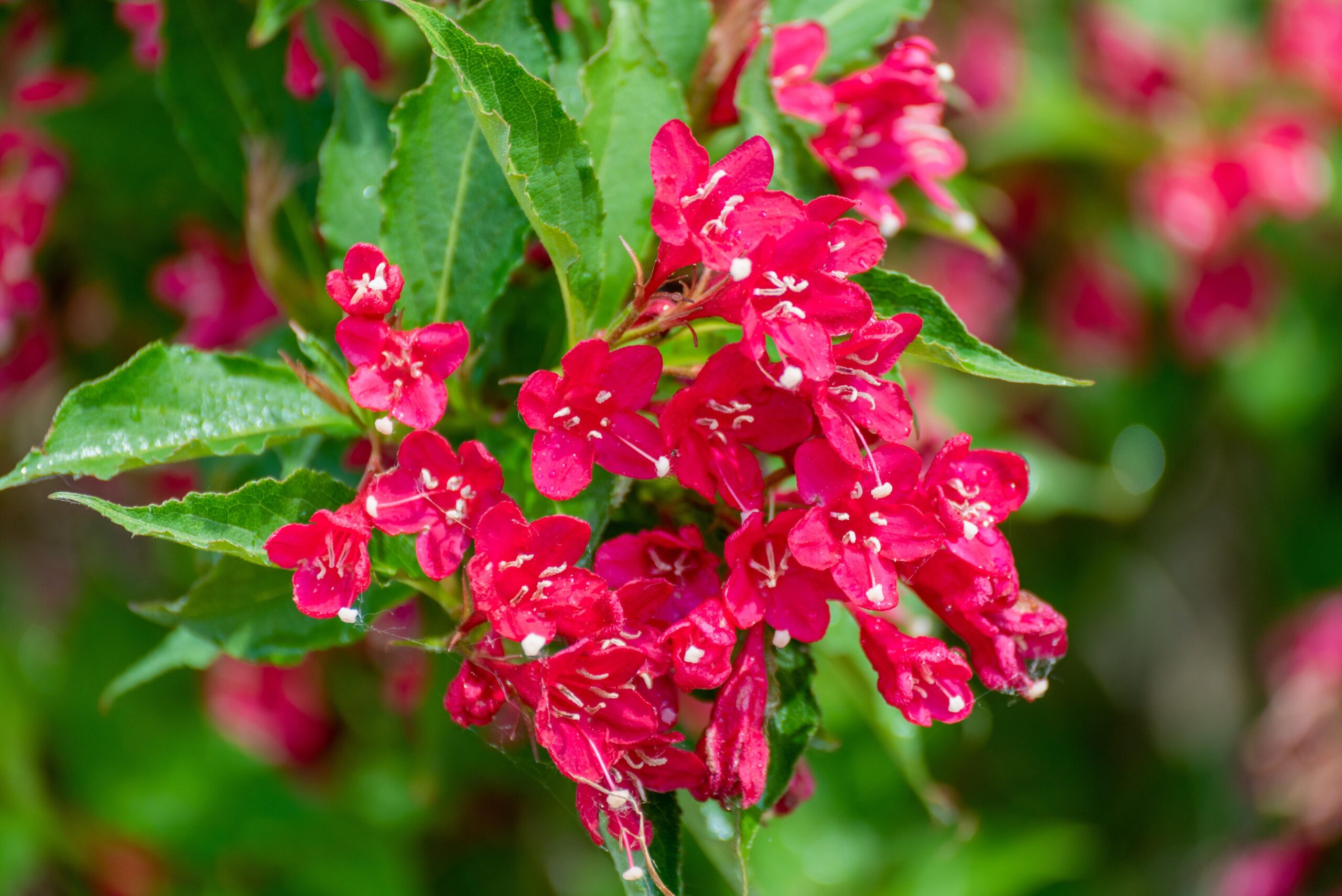
Easily grows red, white, or pink flowers under full sunlight, which can attract small insects and birds such as butterflies and hummingbirds.
Examples:
- Wine and Roses® Weigela (Weigela florida ‘Alexandra’)
- French Lace Weigela (Weigela florida ‘French Lace’)
- Sonic Bloom® Pink Reblooming Weigela (Weigela florida ‘Bokrasopin’)
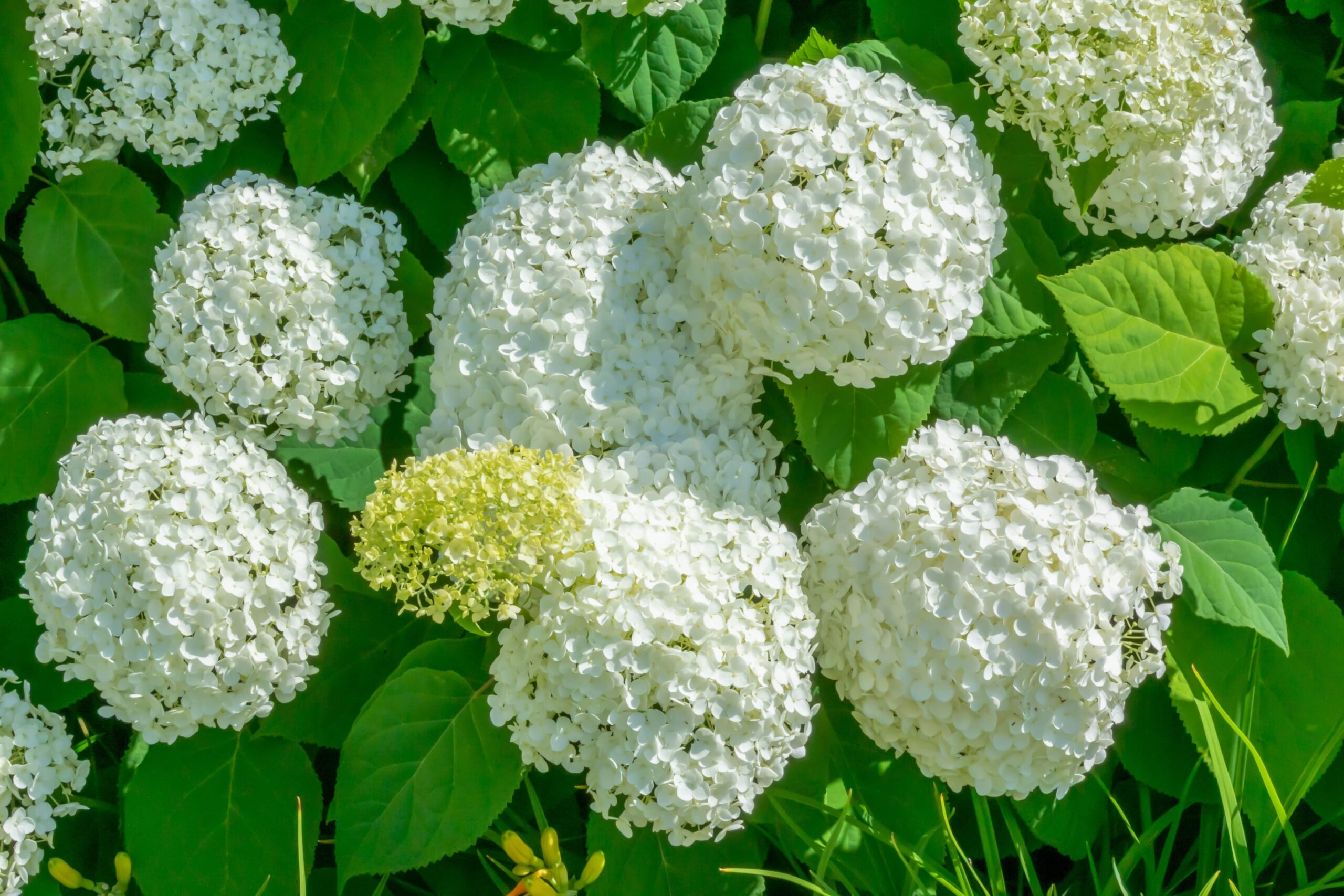
Well-known for their large blossom bundles that can come in pink, white, lavender, etc. Many are good for growing along vertical structures and being adaptable to growing in the sun or shade.
Examples:
- Smooth Hydrangea (Hydrangea arborescens)
- Climbing Hydrangea (Hydrangea petiolaris)
How to Plant Flowering Trees and Shrubs in 5 Easy Steps
Now that you have learned a bit more about the different flowering trees and shrubs in the central PA area, it’s time to pick your plants. Once you have done so, you can begin preparing and planting your trees and/or shrubs.
Here are five steps to help walk you through the planting process and what you should be aware of as you begin.
1. Find a Suitable Place to Plant
Be sure to thoroughly research the tree or shrub you will be planting ahead of time before jumping into digging. Take note of the amount of sunlight/shade the plants need to survive, as some need constant direct sunlight while others only require partial shade
Keep in mind the hardiness areas and zones when deciding where to grow your flowering trees and shrubs. Be certain your plants can thrive in your area and won’t negatively affect others growing nearby.
It’s also good to be certain of the height your tree or shrub will grow to and the space it will take up. Do your research, and become familiar with what will grow best in your garden or lawn.
2. Prepare the Hole and Plant Mixture
Pick where you want to plant your trees and/or shrubs and dig a hole that’s about twice the width of the plant’s root ball and the depth about as deep as the root ball.
At the same time, prepare a planting mixture. We recommend blending 50% Stauffers Professional Planting Mix with the indigenous soil just dug out.
3. Transfer Your Tree or Shrub
If your plant is potted, remove its container. Then prune the roots with a small set of shears or gardening clippers by cutting and spreading them out. That way, they will grow out into the surrounding soil.
Place your plant in the hole so the top of the root ball is only slightly above ground level. We recommend treating the roots with Espoma Organic Bio-tone Starter Plus before covering them again with soil.
Fill your hole with soil mix, and tamp firmly to prevent air pockets.
If the tree is wrapped with burlap, either remove burlap and twine carefully or cut the twine and fold down the burlap into the hole. It is very important that the plastic/nylon burlap and twine be removed entirely.
4. Stake Your Tree
This step is specifically for trees, but an important one to allow for healthy root and straight growth while preventing uprooting from strong winds and storms.
We recommend threading a piece of wire through an old piece of hose and bending it in half. Pass the hose through the open trunk of the tree, pinch, wrap it around the tree, and put a stake in before wrapping the other end of the wire around it.
5. Water and Mulch Thoroughly
Soak your flowering tree and/or shrub thoroughly several times. Once the water soaks away, finish backfilling to soil level with your soil mix.
Be mindful of how deep your hole is and how your tree was cared for prior to purchasing. If you plant your tree deeper than it was growing in the nursery, it may die.
Spread about 2 inches of mulch around the tree, careful not to pile it against the trunk. We recommend using Stauffers Black Bark Mulch and creating a small basin with mulch around the edge of the hole to retain water more easily, filling it several times to ensure full soakage.
Apply a root stimulator to the base of the plant as per the manufacturer’s recommendations. Apply monthly during the growing season to encourage a healthy deep root system.
Caring and Maintaining Your Flowering Trees & Shrubs
Now we can look at how to continue to care and look after your trees and shrubs in order to maintain their beauty and liveliness for your home.
Watering
Aggressively water your trees and shrubs every 4-7 days for the first month after planting them. It’s best to leave a hose running at the base of the tree/shrub until the soil is thoroughly soaked.
Keeping in mind the weather and monitor for rain and sun, continue watering your plant every 1-2 weeks to prevent soil (and by extension the plant) from drying out or becoming weak and sick. Sure signs of over-dryness are wilting flowers and browning leaves on your plant.
Pruning
Take note of growth patterns, as part of your responsibility will often involve pruning the trees and shrubs to keep their shape and prevent overgrowth.
Typically, the ideal time to do full-on pruning is late spring/early summer, right after they finish blooming. Learn what shape will best suit your tree or shrub’s growth to complement your area, as size consideration is always important when deciding to plant.
Pest Control
Monitor what small birds, critters, and insects will frequent your plants. Some are more friendly than others, and it’s important to recognize any dangerous pests that may harm your trees and shrubs.
Be aware of the signs, and take appropriate measures to protect your new plants.
Landscape Planning
For other major ideas or landscaping ambitions for your yard/garden, see our Landscape Design & Installation Services is happy to help you find the perfect look for your home. We are more than happy to work with you to find what works best for you and your home.
If you are ready to begin the first step of your garden experience, check out Stauffers’ plant and tree finder to browse our wide selection of trees, shrubs, and plants!
